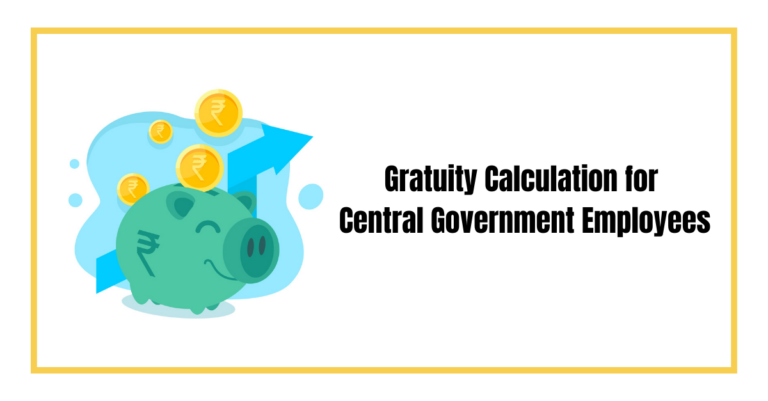Explore the concept of gratuity on retirement, including retirement gratuity calculation, gratuity pension, and the gratuity period. Utilize the gratuity retirement calculator for accurate calculations in planning for a secure retirement.
Gratuity on Retirement
Gratuity is a payment the employees receive for the service he has given to the organisation and is usually seen as a part of the retirement benefits given to the employee when he retires. However, it can also be paid prior to retirement. Use Vakilsearch’s retirement gratuity calculator for a simple and easy estimation of your gratuity amount. Please find the eligibility and conditions to receive such a gratuity from the organisation below.
Retirement Gratuity in India – Overview
Gratuity is a lump sum payment made by an employer to an employee when they leave an organization, and it is one of the many retirement benefits offered by a company to an employee in India. The gratuity amount is calculated based on the employee’s last drawn salary and the number of years of service completed with the employer.
The gratuity limit amount recently was increased from Rs 10 lakhs to Rs 20 lakhs in 2023. To be eligible for gratuity under the Gratuity Act, an employee needs to have at least five full years of service with the current employer, except in the event that an employee passes away or is rendered disabled due to accident or illness.
The gratuity amount is exempt from taxation to the extent that it does not exceed 15 days of salary for every completed year of service calculated on the last drawn salary, subject to a maximum of Rs 20 lakhs
How to Calculate Gratuity on Retirement?
Gratuity in India is calculated using the formula:
Gratuity = Last drawn salary × 15/26 × number of years of service.
The last drawn salary includes basic pay plus dearness allowance (DA) and is calculated based on the employee’s salary at the time of retirement.
The number of years of service is rounded off to the nearest full year, with any service period of more than six months being considered as a full year
What is a Gratuity Retirement Calculator?
Vakilsearch’s gratuity retirement calculator is an online tool that estimates the gratuity amount an employee is eligible to receive upon retirement. The calculator takes into account the employee’s last drawn salary, the number of years of service, and other relevant factors to provide an estimation of the gratuity payout
All employees currently working in government or private organizations are eligible for gratuity pay at retirement if they have completed at least five years of service under the same employer.
Retirement Gratuity Benefits in India
Retirement gratuity benefits in India include a one-time lump sum payment made to the retiring employee. The retirement gratuity is calculated at 1/4th of an employee’s monthly basic pay plus DA drawn on the retirement date for each completed half-yearly period of qualifying service.
There is no minimum limit for the amount of gratuity, and the upper limit of gratuity payable for qualifying service of 33 years or more is 16.5 times the basic pay plus DA, subject to a maximum of Rs. 20 lakhs.
In addition to the gratuity amount, retiring employees may also be eligible for other retirement benefits such as dearness allowance, pension, and death gratuity. The maximum amount of death gratuity admissible is Rs. 20 lakhs, and it is payable to the nominee or family member of a government servant dying in harness.
The Retirement Gratuity Eligibility
The retirement gratuity is for employees in an entity who are at least working in a firm for 5 years. This, however, doesn’t apply in all cases. Any company with ten or more employees is obligated to pay gratuity. Only after an employee has worked for the company for atleast five years he or she entitled to a gratuity. When an employee leaves the company, whether through resignation, retirement, or layoff, the gratuity sum becomes due, and the company is liable to pay the same as prescribed under the Payment of Gratuity Act 1972.
The 5-year regulation does not apply in the circumstance of an employee’s death or disability. In this instance, regardless of the tenure of service before the employee’s death, the gratuity must be granted to the employee’s nominee/heir. Contractual workers, in general, are not eligible for gratuity as per the regulation. A government official who has served for five years and is eligible for a service gratuity or retirement benefits pursuant to Rule 44 under the Act is entitled to a retirement gratuity proportional to one-fourth of his fringe benefits for each completed six-month term of qualifying service, up to a maximum of 16½ times his payments and following the limit prescribed under the Payment of Gratuity Act 1972.
The following are a few scenarios in which the individual will be liable for gratuity per the regulation.
- An employee should be qualified for retirement benefits
- An employee tends to leave. a company
- An employee leaves a job after 5 years with the same company
- An employee dies or becomes disabled due to illness or an accident.
If an employee has worked for at least four years and nine months but less than 5 years, his or her qualifying service for gratuity purposes will be counted as five years. In addition, he or she will be entitled to a retirement bonus. For calculating gratuity, dearness allowances payable on the day of retirement or death are also considered emoluments. For the easy calculation of the retirement gratuity amount, there is a retirement calculator used, which is convenient to use, and the same is according to the rules provided under the Act.
Gratuity Calculation for Employees Who Are Covered under the Payment of Gratuity Act, 1972
The formula for calculating retirement gratuities for employees covered under the Payment of Gratuity Act 1972 is as follows:
Wherein n denotes the last drawn salary of the employee. While calculating the last drawn salary, the basic salary of the employee along with the dearness allowance is considered. wherein b denotes years of service with a company For example, if you have 15 years of experience with the XYZ corporation and your most recent basic pay, including dearness allowance, is ₹30,000.
The amount of gratuity would be= 30000*15/26*15 = 2,59,615
There are two things to keep in mind here:
The gratuity sum shall not exceed twenty lakhs, according to the Payment of the Gratuity Act, 1972 and shall be exempt from taxes.
For the purpose of calculations, any period of more than 6 months shall be considered as 1 year. Thus, if your service period is 16 years and 7 months, you will be paid a gratuity of 17years. Otherwise, there is a retirement gratuity calculator per the prescribed format to make it easy to calculate.
Gratuity Calculation for Employees Who Are Not Covered Under Act
Gratuity can be paid even if the organisation is not covered under the Payment of Gratuity Act 1972. The calculation of gratuity, on the other hand, is based on a half-income month for each year finished. Commission, i.e. sales-based, dearness allowance, and basic income are all included in the salary.
For employees who are not covered by the Payment of Gratuity Act 1972, the following formula is used to calculate the gratuity amount:
Gratuity amount = {15*last drawn salary * tenure of service }/30
For the purposes of the calculation, an employee’s service tenure is deemed to be a full year. If the number of months worked in the preceding year was fewer than six, the prior number of completed years is taken into account. If the number of months completed in the previous year of service is greater than six, the year is considered a full year for purposes of calculation. As a result, the working period was calculated to be 11 years. The number of years of service would have been counted as ten years only if the service duration had been ten years and 4 months or anything less than six months.
The amount of gratuity at the time of retirement is determined as follows, according to the guidelines stated on the government’s pensioner’s portal:
The gratuity amount is one-fourth of an employee’s last-drawn basic wage for each completed 6-month period. The amount of retirement gratuity that must be paid is 16 the basic drawn salary. However, there is a limit of ₹ 20 lakhs.
FAQs on Retirement Gratuity
How should one apply for Retirement Gratuity?
To apply for Retirement Gratuity, an employee should file an application with the employer. The employer then calculates the gratuity amount and disburses it within a specified time frame.
Can the retirement age affect eligibility for Retirement Gratuity?
The retirement age can affect eligibility for Retirement Gratuity, as it is typically granted after a minimum of 5 years of service, and the amount may vary based on the years of service and last drawn salary.
Is Retirement Gratuity the same as Provident Fund or Pension?
Retirement Gratuity is different from Provident Fund or Pension. Gratuity is a lump sum payment made by the employer to the employee as a gesture of appreciation for their service, while Provident Fund and Pension are separate retirement benefits.
Can the gratuity amount be higher than the calculated formula?
Yes, employers can offer a gratuity amount higher than the calculated formula as a gesture of appreciation for an employee's service. However, the statutory limit is ₹20 lakhs, and any amount above this is considered ex-gratia.
Is there a maximum limit on Retirement Gratuity?
Yes, the maximum limit on Retirement Gratuity is ₹20 lakhs, as per the Payment of Gratuity Act, 1972. Any amount above this limit is considered as ex-gratia payment.
Read More:-










